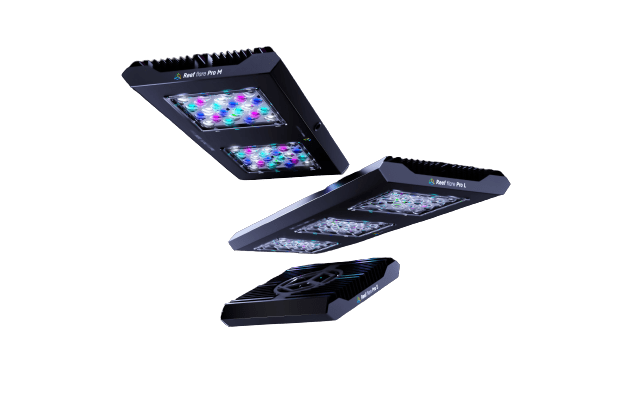Table of Contents
Accelerating coral growth – Introduction
There is a method that allows for accelerating coral growth. This is an advanced level because it requires a thorough knowledge of marine aquaristics. Additionally, it necessitates mastery of selected areas within a marine aquarium. In the article, I explain how it works, and in the penultimate section, I describe the steps needed to accelerate coral growth.
Carbonate hardness and accelerating coral growth
The KH level (carbonate hardness) is a key parameter in marine aquaristics. Additionally, it has a direct impact on coral health and growth, which is related to accelerating coral growth. The optimal KH level ranges from 7 to 12 dKH. Maintaining KH at the higher end (10-12 dKH) can contribute to faster coral growth while helping to keep water pH stable. This is important because stable pH supports the photosynthesis process conducted by zooxanthellae, directly affecting their health and growth.

Circulation and accelerating coral growth
Studies by Hughes et al. (2018) and Wangpraseurt et al. (2017) have demonstrated the importance of strong water movement for coral health and growth. Strong water flow reduces physiological stress in corals and stimulates photosynthesis in their symbiotic algae, known as zooxanthellae. This process makes corals more resilient to climate change, significantly impacting coral growth acceleration.
Moreover, stronger water circulation in marine aquariums is essential for delivering the necessary nutrients to corals. It also aids in cleansing them of metabolic waste products.

Lighting and accelerating coral growth
Corals contain microscopic algae called zooxanthellae, which live within their cells and perform photosynthesis. This process produces carbohydrates and amino acids for the corals.In return, corals provide shelter and essential substances for photosynthesis. This process involves the absorption of light energy by chlorophyll in zooxanthellae, leading to glucose production.
The photosynthetic potential of corals depends on several factors, such as light quality and intensity (PAR), water circulation efficiency, KH level, temperature, nutrient concentration, and proper chemical conditions. All these elements work together to enable corals to perform efficient photosynthesis and achieve healthy growth. This synergy influences coral growth acceleration in a marine aquarium.
Remember that when increasing light intensity, it’s important to also increase water circulation.

Water temperature and accelerating coral growth
Water temperature has a significant impact on the growth rate of corals. Corals do not tolerate temperatures below 20°C (68°F). The optimal temperature range is between 24–28°C (75.2–82.4°F), although some species can tolerate brief exposures to temperatures as high as 40°C (104°F). However, prolonged exposure to such high temperatures can be harmful. For marine aquariums, I do not recommend dropping below 23°C (73.4°F).
Research conducted by the Scripps Institution of Oceanography has shown that coral growth is highly sensitive to changes in water temperature. They found that coral growth accelerates with rising water temperatures, but only up to a certain point. If the temperature is too high or increases too rapidly, corals quickly reach a critical point. Beyond this point, growth significantly slows, and bleaching and coral death can occur.
As a marine aquarist and former owner of a coral shop and farm, I’ve observed that higher temperatures around 27–28°C (80.6–82.4°F) promote faster coral growth. However, these are my personal observations, and in marine aquaristics, every aquarium is unique.

The role of optimal pH in accelerating coral growth
The role of pH in a marine aquarium ecosystem:
- pH indicates whether the water is acidic or alkaline, which is crucial for many biological processes in the aquarium.
- The optimal pH range for a reef aquarium is 8.1–8.4, which affects the solubility of nutrients in the water and accelerates coral calcification.
Impact on fish and coral health:
- Stable and optimal pH levels reduce stress on corals, promoting their growth.
- High pH has an antiseptic effect, destroying microorganisms on fish skin, mucous membranes, and infected wounds.
Impact on biological processes:
- pH affects the nitrification process in a marine aquarium. Nitrosomonas and Nitrobacter bacteria convert ammonia into nitrites and then into nitrates.
Managing pH fluctuations in the aquarium:
- pH often fluctuates throughout the day, being higher during the day and lower at night due to coral photosynthesis and bacterial activity.
- pH fluctuations can impact bacteria and nutrient concentrations in the aquarium, which is not beneficial for corals.
Eliminating issues with too low or too high pH:
- Too low pH can lead to the release of trace element deposits, including heavy metals, into the water.
- Too high pH can damage fish gills and kidneys, weaken their immunity to diseases, and inhibit growth.
Chemical balance and accelerating coral growth
The topic of elemental balance in a marine aquarium is extensive. In short, it boils down to maintaining element levels at optimal values. Both low and high mineral concentrations can lead to a decline in coral metabolic processes. In some cases, excesses or deficiencies can result in coral mortality.
It is worth noting that each element can have a different effect on various coral species, and even distinct impacts on their biological functions. Furthermore, dynamic interactions exist among elements in seawater. When beginning trace element supplementation, one must consider these complex interactions. For example, concentrations of elements like nickel (Ni), zinc (Zn), vanadium (V), copper (Cu), and molybdenum (Mo) are closely linked.
At this stage, the goal is to keep elements within standard ranges to avoid deficiencies or excesses. Additionally, it is essential to prevent contaminants, such as unwanted heavy metals. Regular testing and precise water composition control are necessary to maintain a healthy and balanced environment for corals in a marine aquarium, thereby promoting accelerated coral growth within the aquarium.

Nutrient levels
Lower nutrient values:
- Beneficial impact: Low nutrient levels, such as nitrates (NO3) and phosphates (PO4), can positively affect coral health and coloration, leading to brighter colors and improved growth. Optimal levels of these nutrients may vary depending on the specific conditions of each aquarium. For example, an optimal PO4 level might be around 0.08, and NO3 around 0.5. However, it’s essential to adjust these values to suit your own tank. Some aquariums may thrive at slightly higher levels, such as 0.15 PO4. Experiment slowly to find the ideal conditions for your aquarium.
- Risk: Extremely low levels can lead to coral and zooxanthellae (symbiotic algae) starvation, negatively impacting their ability to photosynthesize and grow. It’s important to avoid levels approaching zero.
Excess nutrients:
- Risk to corals: High levels of nitrogen (as nitrates) and phosphorus (as phosphates) can promote excessive growth of algae and cyanobacteria. Such an environment is harmful to corals, as algae can overshadow them, limiting access to light and space.
- Effect on coral health: Excessive nutrients can also reduce coral coloration, causing them to appear duller or browner. This may result from an increase in zooxanthellae within coral tissues, altering their appearance.
Stability in a marine aquarium
Stability of conditions in a marine aquarium is crucial for avoiding coral stress and promoting accelerated coral growth. Corals have a limited capacity to adapt to rapid environmental changes. Therefore, any modifications—such as nutrient levels, water circulation, lighting, KH, salinity, and others—should be introduced gradually. Sudden parameter shifts can significantly stress corals, so maintaining a consistent, repeatable pattern of conditions in the aquarium is essential for healthy coral growth. Abrupt changes can hinder their development, making a consistent and steady approach to aquarium parameter adjustments important.
Synergy of areas for accelerating coral growth
Once nutrient levels, water chemistry, pH, temperature, and KH are properly established, we can gently accelerate coral growth. Start by increasing water circulation, which is the first step. In the next stage, gradually increase lighting. After that, you can slowly raise the KH level to further support faster coral growth.
Increasing circulation, lighting, and KH requires close monitoring of Ca, Mg, and KH levels, as these changes can happen quickly. If consumption rises, dosing should be adjusted accordingly. Failure to maintain stable aquarium parameters may stress corals, inhibiting their growth.
Automatic testers, like the KH Keeper Plus, can assist in this process. If consumption starts to increase, it’s a positive sign; calcification has accelerated, indicating faster coral growth.
It’s also valuable to monitor PO4 levels, which may require adjustment in response to changes. In my experience, PO4 sometimes decreases by a few points over a day, for example, from 0.08 to 0.06. I increased dosing on pumps so that PO4 rose by 0.01 per day.
To ensure optimal conditions for coral growth, we focus first on aquarium stability, appropriate water chemistry, and sufficient nutrient levels. Next, we increase water circulation and PAR light intensity, then gradually raise KH levels. Monitor KH and PO4 (and occasionally Ca and Mg) to adjust dosing. Additionally, PO4 dosing may need to be increased as it’s likely to be consumed at a higher rate.

Summary
Managing PO4 levels was my main challenge. It impacted the rate of mineral consumption in the aquarium, monitored through the KH Keeper, assuming all elements are consumed proportionally. I worked on finding a balance between key aspects. These included stronger water circulation, quality PAR lighting, and a higher KH level, which I implemented in the second phase. Each of these adjustments was introduced gradually, starting with circulation, which is crucial for improving coral metabolism. Even when maintaining KH at a standard level of 8 dKH, I observed an increase in component consumption and faster coral growth.

About the author

Marek Protasewicz
Reefkeeping has been my passion for over 10 years now. I love learning. The hobby has taught me many valuable lessons, patience being the best example. Combining work and passion is my path. I run Crazy Coral, a marine aquarium shop, for a number of years. Building this business from the scratch I learnt from my own mistakes at a heavy cost.
Later I managed a project aimed at development of methods for quick growth of Corals in non-natural conditions. The project was carried out by Get Sales, Poland. Presently, I am responsible for distribution strategy at Reef Factory, of which I am a co-founder. The company produces smart devices for marine aquaristics. The last projects I have been involved in are Social Reef and ReefPedia.



